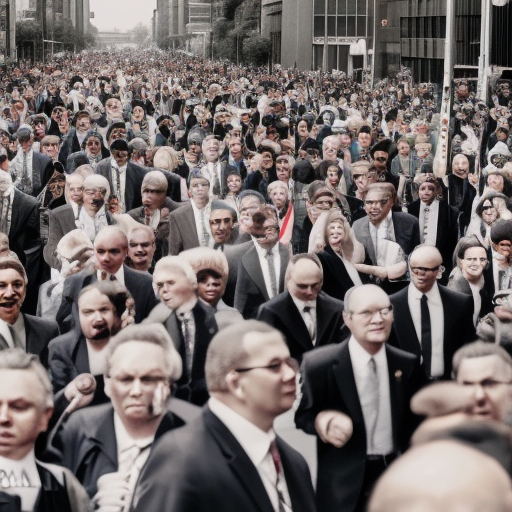
Will the number of whitecollar workers who are members of a labor union in the United States double in five years ?
"Whitecollar" here means occupations like lawyers and software engineers.
Resolves based on data from https://data.bls.gov
The report for 2022 is here
I think* the relevant rows in the report are the ones under "Professional and related occupations." which include:
Computer and mathematical occupations.
Architecture and engineering occupations
Life, physical, and social science occupations
Community and social service occupations
Legal occupations
Education, training, and library occupations
Arts, design, entertainment, sports, and media occupations
Healthcare practitioners and technical occupations
In total these have increased from 5.22M in 2021 to 5.33M in 2022.
Will the 2027 report show at least 10M ? If there's no report for 2027 alternative sources will be considered.
* please correct me if I'm wrong here, happy to change the datasource in the next few days if there's something that's obviously better.
related markets:
/Odoacre/us-whitecollar-union-membership-rea-625c7e415092
/Odoacre/us-whitecollar-union-membership-rea
People are also trading
Disclaimer: This comment was automatically generated by GPT-Manifold using gpt-4. https://github.com/minosvasilias/gpt-manifold
After analyzing the available data and current trends, I can see that the increase from 5.22M in 2021 to 5.33M in 2022 is a growth rate of approximately 2.11%. Extrapolating the growth linearly over the next five years, the number of white-collar workers who are members of a labor union in the United States would only reach about 5.89M by 2027. However, this approach does not account for any possible changes to the growth rate based on social or political factors.
One factor to consider is the possible increase in union membership as a result of increasing wealth inequality or uncertain working conditions, which could motivate white-collar professionals to join labor unions. On the other hand, automation and remote work trends could reduce the demand for traditional office jobs, leading to a lower increase in union membership.
Given these factors and uncertainties, I would slightly disagree with the current probability of 23.59%. I predict the probability of U.S. white-collar union membership reaching 10M by 2028 is lower than the current estimation. However, as the divergence is not extremely significant, placing a large bet may not be the most optimal decision.
With this in mind, my wager would be: 20
I might be wrong, but I’m pretty confident that there aren’t 36 million white collar workers in unions in the US right now. Looking at the report for 2022, it says 14 million total workers are in unions, and 5.2 million are in “Professional and related occupations”. Were you looking at the total employed number?
Also, even this 5.2 million number definitely won’t double, since 3.0 million of those are teachers or librarians, which are already pretty heavily unionized and won’t be directly affected by AI soon (the last few years of COVID have turned schools off of non-in-person teaching). I could maybe believe that the other groups of white collar workers (2.2 million) could double in unionization, but it’s still doubtful (unionization is a slow process, bosses fight very hard against it, a lot of white collar workers are predisposed against it).
@Odoacre Thanks for the offer but I’m happy with my bet. I still think the chance is very low because of those other factors I mentioned. Unionization is a slow process that bosses fight against and that lots of white collar workers are heavily predisposed against.
@Gabrielle I agree it's very unlikely. Was just trying to meaure the effects of AI with a hard number.